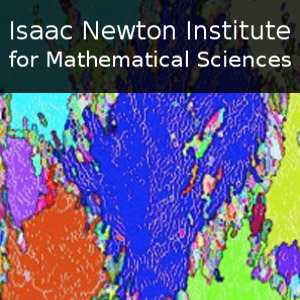Correlation of local ice forces across the width of a structure during ice-structure interaction
1 hour 3 mins,
116.71 MB,
MP3
44100 Hz,
252.93 kbits/sec
Share this media item:
Embed this media item:
Embed this media item:
About this item

| Description: |
Sodhi, D
Wednesday 8th November 2017 - 11:30 to 12:30 |
|---|
| Created: | 2017-11-09 13:02 |
|---|---|
| Collection: | Mathematics of sea ice phenomena |
| Publisher: | Isaac Newton Institute |
| Copyright: | Sodhi, D |
| Language: | eng (English) |
| Distribution: |
World
|
| Explicit content: | No |
| Aspect Ratio: | 16:9 |
| Screencast: | No |
| Bumper: | UCS Default |
| Trailer: | UCS Default |
| Abstract: | The concepts presented in this paper pertain to an ice floe moving against a wide structure, having an aspect ratio greater than 10, and are based on results of small-scale and medium-scale indentation tests as well as published data of measured ice forces on full-scale structures.
Data from indentation tests with tactile sensors at the ice-structure interface reveal that: (a) interactions at low ice speed produce ductile deformation of ice, creating a slowly expanding contact area until it covers 100% of the nominal contact area, and (b) interactions at intermediate and high ice speeds produce brittle failure of ice, resulting in the actual contact area to be less than the nominal contact area. During interactions at intermediate and high speeds, brittle failure of ice creates uneven surface at the ice-structure interface, creating asperities at the ice front. When these asperities advance towards the structure, they generate contacts at a few isolated spots. During an ice-structure interaction, these contact areas expand under contact pressure with time, causing local ice forces to be generated at the ice-structure interface. The summation of all local forces at an instant in time is the global ice force. The results of indentation tests with a segmented indentor and tactile sensor reveal a decrease in correlation of local ice forces across the width of a structure with increasing ice speed. This results in a decrease in variance of global effective pressure while the average global effective pressure remains in the range of local average effective pressure. These two effects are well supported by experimental results. The correlation of local ice forces is quantified by a correlation-length parameter, which decreases with increasing ice speed as per experimental data. These concepts of ice crushing process have been incorporated in a theoretical ice-structure-interaction model. |
|---|---|
Available Formats
| Format | Quality | Bitrate | Size | |||
|---|---|---|---|---|---|---|
| MPEG-4 Video | 640x360 | 1.95 Mbits/sec | 924.49 MB | View | Download | |
| WebM | 640x360 | 551.35 kbits/sec | 254.41 MB | View | Download | |
| iPod Video | 480x270 | 528.33 kbits/sec | 243.79 MB | View | Download | |
| MP3 * | 44100 Hz | 252.93 kbits/sec | 116.71 MB | Listen | Download | |
| Auto | (Allows browser to choose a format it supports) | |||||

